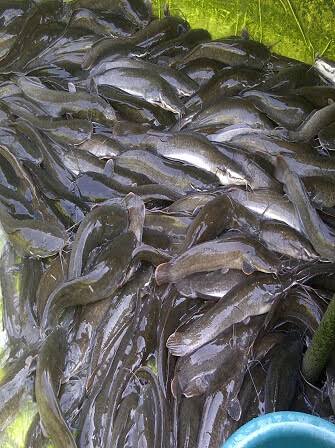🔥E- book offer of the day: 👉👉 Poultry farming business report Volume 5
Essentials of catfish nutrition for every catfish farmer
Proper catfish nutrition is essential for growth, reproduction, and overall health. Here are key details for effective catfish nutrition:
 Learn More
Learn More1. **Protein-Rich Feed:**
– Catfish require a high-protein diet. Use fishmeal, soybean meal, or other protein sources to meet their nutritional needs.
2. **Energy Sources:**
– Include energy-dense feeds like grains (soybeans, corn) to provide the necessary calories for growth.
3. **Vitamins and Minerals:**
– Ensure adequate levels of vitamins (A, D, E, and K) and essential minerals (calcium, phosphorus) for bone development and overall health.
4. **Supplements:**
– Consider vitamin and mineral supplements to fill potential gaps in the diet.
5. **Fats and Oils:**
– Include fats and oils for energy and essential fatty acids. Fish oil is a good source of omega-3 fatty acids.
6. **Floating Pellets:**
– Use floating pellets to monitor feeding and prevent overfeeding, ensuring efficient feed utilization.
READ ALSO Important Roles of Temperature and Oxygen in Catfish Farming
7. **Water Quality:**
– Maintain good water quality as it directly affects catfish health and nutrient absorption.
Purchase this compelling ebook instantly. 👉👉21 most important poultry diseases with prevention, control & treatment
8. **Amino Acids:**
– Ensure a balance of essential amino acids for protein synthesis and overall growth.
9. **Digestible Carbohydrates:**
– Include digestible carbohydrates for energy but be cautious not to overemphasize them in the diet.
10. **Live or Fresh Feed:**
– Consider supplementing with live or fresh feed to stimulate natural feeding behaviors.

11. **Feed Conversion Ratio (FCR) Monitoring:**
– Regularly monitor FCR to assess the efficiency of feed utilization and adjust the diet accordingly.
12. **Temperature Considerations:**
– Adjust feeding rates based on water temperature, as catfish metabolism is temperature-dependent.
READ ALSO 15 Elements of catfish farming success at your fingertips
13. **Life Stage Specific Feeding:**
– Tailor diets for different life stages, including fingerlings, juvenile, and adult catfish.
Invest in this knowledge-packed ebook promptly. 👉 20 questions to ask your poultry farm manager everyday
14. **Avoid Overfeeding:**
– Overfeeding can lead to water quality issues and health problems. Adjust feeding amounts based on growth rates.
15. **Biosecurity Measures:**
– Implement biosecurity practices to prevent the introduction of diseases that may affect catfish health.
16. **Record Keeping:**
– Maintain accurate records of feed consumption, growth rates, and health observations for effective management.
ATTENTION: Click “HERE” to join our WhatsApp group and receive More updates directly on your WhatsApp!
17. **Consult with Nutritionists:**
– Seek advice from a fish nutritionist to develop a customized feeding program based on your specific pond conditions and catfish species.
By addressing these essentials, catfish farmers can optimize the health, growth, and production of their catfish. Regular monitoring and adjustments to the feeding program are crucial for successful catfish nutrition.
🧩CREATED BY DR JOSEPH DEJI-FOLUTILE















